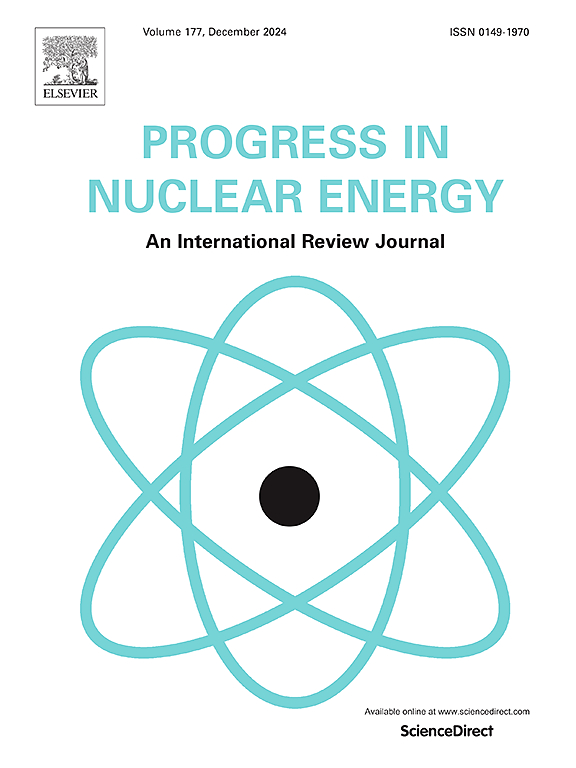Research on fast prediction of boiling flow parameters in rod bundle of NPP based on efficient CFD-ROM methods
IF 3.3
3区 工程技术
Q1 NUCLEAR SCIENCE & TECHNOLOGY
引用次数: 0
Abstract
Historically, Computational Fluid Dynamics (CFD) has been widely used to verify the flow dynamics in rod bundle channels. Nevertheless, the iterative calculation and time consumption make it impractical for the application of digital twin that require efficiency. In order to tackle this difficulty, we suggest utilizing a data-driven order reduced model (ROM) to rapidly predict flow fields of rod bundle channels. Previous research on Reduced Order Models (ROM) for rod bundle channel has primarily focused on the single-phase state, with little emphasis on the two-phase state. Thus, the study focuses on the ROM of rod bundle channel in a two-phase state. First, a Computational Fluid Dynamics (CFD) data set is processed using the Proper Orthogonal Decomposition (POD) algorithm to identify important modes. Then, a Back-Propagation Neural Network (BPNN) model is trained as the agent model, due to its strong ability to fit non-linear relationship between input and output. The structure of BPNN is optimized. Ultimately, the ROM model is utilized to predict the flow field of a rod bundle channel under new boundary conditions. The comparison with CFD calculation confirms the effectiveness of the Reduced Order Model (ROM), showcasing its high precision in predicting the temperature, velocity, and void fraction fields within the rod bundle channel. In addition, the ROM model reaches a computation speed that is roughly 10^4 times quicker than standard CFD simulations. Nonetheless, it is noted that the model's predictive accuracy diminishes under conditions of slight subcooled boiling, due to the lack of samples under the condition. An improvement strategy: Subdivide the sampling space region according to various change stages, implement partition sampling.
求助全文
约1分钟内获得全文
求助全文
来源期刊

Progress in Nuclear Energy
工程技术-核科学技术
CiteScore
5.30
自引率
14.80%
发文量
331
审稿时长
3.5 months
期刊介绍:
Progress in Nuclear Energy is an international review journal covering all aspects of nuclear science and engineering. In keeping with the maturity of nuclear power, articles on safety, siting and environmental problems are encouraged, as are those associated with economics and fuel management. However, basic physics and engineering will remain an important aspect of the editorial policy. Articles published are either of a review nature or present new material in more depth. They are aimed at researchers and technically-oriented managers working in the nuclear energy field.
Please note the following:
1) PNE seeks high quality research papers which are medium to long in length. Short research papers should be submitted to the journal Annals in Nuclear Energy.
2) PNE reserves the right to reject papers which are based solely on routine application of computer codes used to produce reactor designs or explain existing reactor phenomena. Such papers, although worthy, are best left as laboratory reports whereas Progress in Nuclear Energy seeks papers of originality, which are archival in nature, in the fields of mathematical and experimental nuclear technology, including fission, fusion (blanket physics, radiation damage), safety, materials aspects, economics, etc.
3) Review papers, which may occasionally be invited, are particularly sought by the journal in these fields.
 求助内容:
求助内容: 应助结果提醒方式:
应助结果提醒方式:


